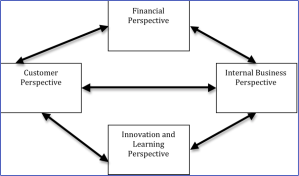When Kaplan and Norton developed the Balanced Scorecard they were seeking to develop a broader perspective of what needs to be measured and managed to achieve success in business and also how to communicate and integrate the measures and targets throughout an organisation.
As the editor of HBR stated in 2007
“In 1992, Robert S. Kaplan and David P. Norton’s concept of the balanced scorecard revolutionized conventional thinking about performance metrics. By going beyond traditional measures of financial performance, the concept has given a generation of managers a better understanding of how their companies are really doing. “
In this way it adds to Peter Senge’s work on the Fifth Discipline and having a systemic view of what a business requires. For example an absence of a systems or systemic view may be the cause of the dreaded cane toads in Queensland as the decision makers sought to eliminate the native cane beetle by introducing cane toads into Australia from Hawaii. The cane toads now number over 200 million and are a huge pest. Their short-sighted solution was to eliminate one pest without thinking that they were simply replacing it with another. Short-term decision making that fails to recognise the implications of changes to an environment, business or system can often lead to problems.
But back to Kaplan and Norton. Their scorecard ensured that leading indicators, such as staff capabilities and internal business processes, were as critical to understand and measure, as the lagging indicators such as revenue and profit.
As leaders we need to recognise that the financial results are the end result of our strategies and their execution. In order to achieve better outcomes we need to re-visit the entire system and assess our strategy from at least four perspectives;
1. How do our client see us and how do we wish to be seen (aka what is your Superior Value Proposition)? What are we trying to solve for the client and how do we plan to do this better than competitors?
2. How will our internal business processes be leveraged to deliver this superior value to the client? How can the way we do things, interact with clients, or utilise information create value we can use to support our client value proposition?
3. How will the capabilities of our strategic job families (roles) need to change or improve to underpin the value we are seeking to deliver? e.g. Will our consultants advice capabilities allow us to deliver services in a way that complements our products and creates additional value for our clients?
4. How will our performance financially be seen by our shareholders? Are our shareholders seeking steady growth, better cash-flow, reduced volatility or rapid growth with patience regarding profitability?
These four elements were represented in a diagram to show the interrelationships of the elements -e.g. a competency developed with staff could create capacity for unique processes that then meets a key customer need and results in increased customer acquisition and revenue.
The most important aspect is the linkage between overall Vision/Strategy via clear measurements. Importantly it also facilitates the alignment of all business areas and individual staff with a related and supportive set of measures and targets.
I have experienced the benefits of a performance system that ensures alignment between overall corporate goals, divisional goals and personal goals. The system was structured to include the four elements and it is a powerful force towards achievement of a business vision.
The Balanced Scorecard is not sufficient to develop strategy in isolation but provides a direction for focus, in a holistic sense, on the overall business and the critical needs of customers and stakeholders. It also focusses attention on the information and process capabilities that can be leveraged as well as the people competencies that need to be developed and/or used in support of generating client value.
Like many systems it is a guide and the real benefits will only be obtained where creativity, innovation and a deep understanding of customers and business capability exists. The Balanced Scorecard is a great communication tool to explain the underlying components required to deliver a strategy and create the alignment critical to employee engagement.
If you get stuck trying to develop measures then you may want to try “How to Measure Anything: Finding the Value of Intangibles in Business” by Douglas W Hubbard.
So the challenge is multi-tiered;
1. Develop the right Vision and Strategy – the balanced scorecard can assist along with other strategic development tools (Porter’s Five Forces, Blue Ocean Strategy, Resource Based View etc)
2. Ensure the whole system is linked towards its achievement – this is a real strength of the Balanced Scorecard – ensuring everyone understands what the business is trying to achieve and how that will be measured.
3. Focus on the key measures ensuring they are causally linked (i.e. they will reflect the right outcome associated with the right inputs). A poor measure that is not reflective of what it is meant to measure will be counterproductive with staff and managers alike.
Do you use the Balanced Scorecard? How well does it serve your business?

